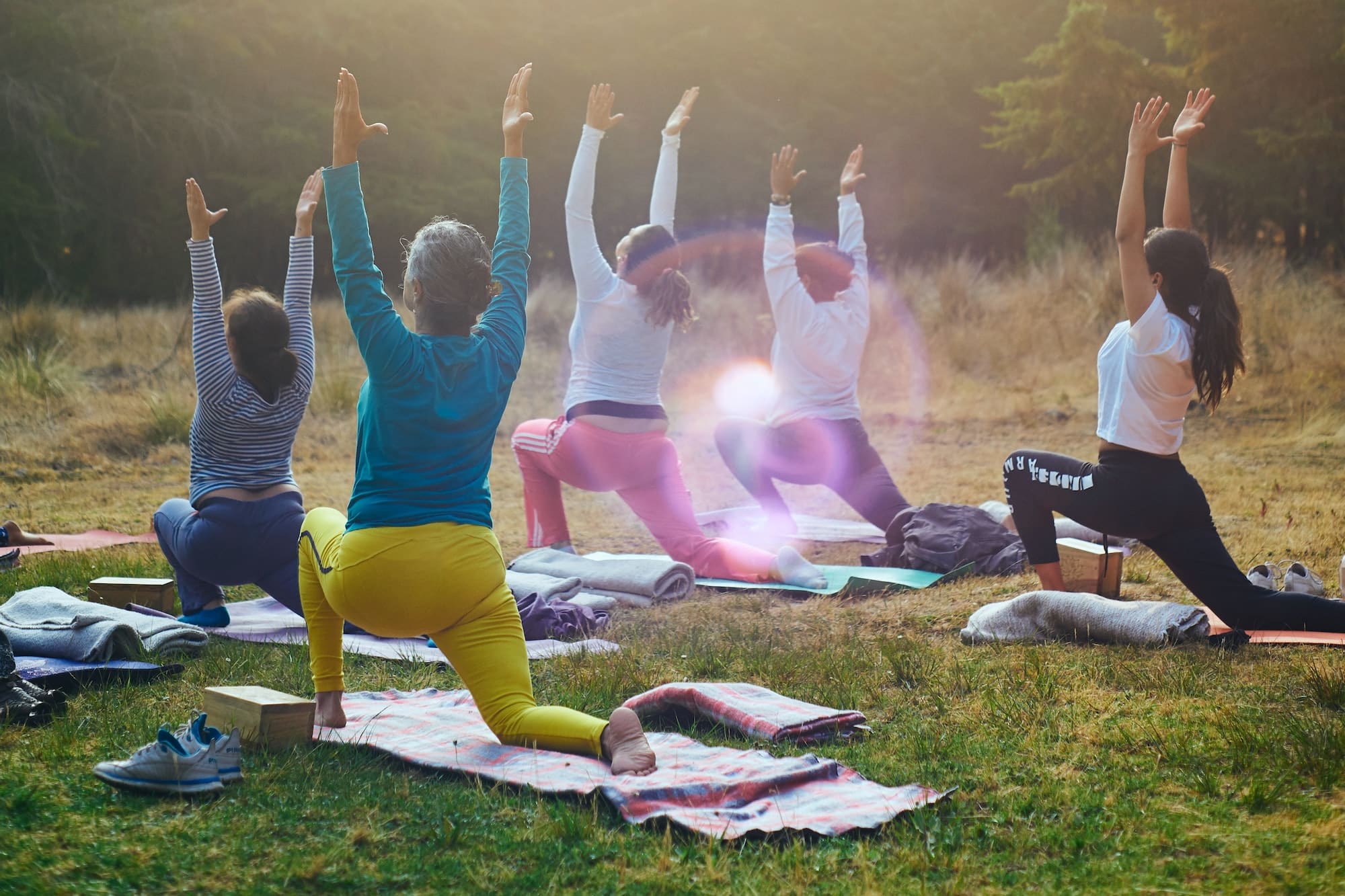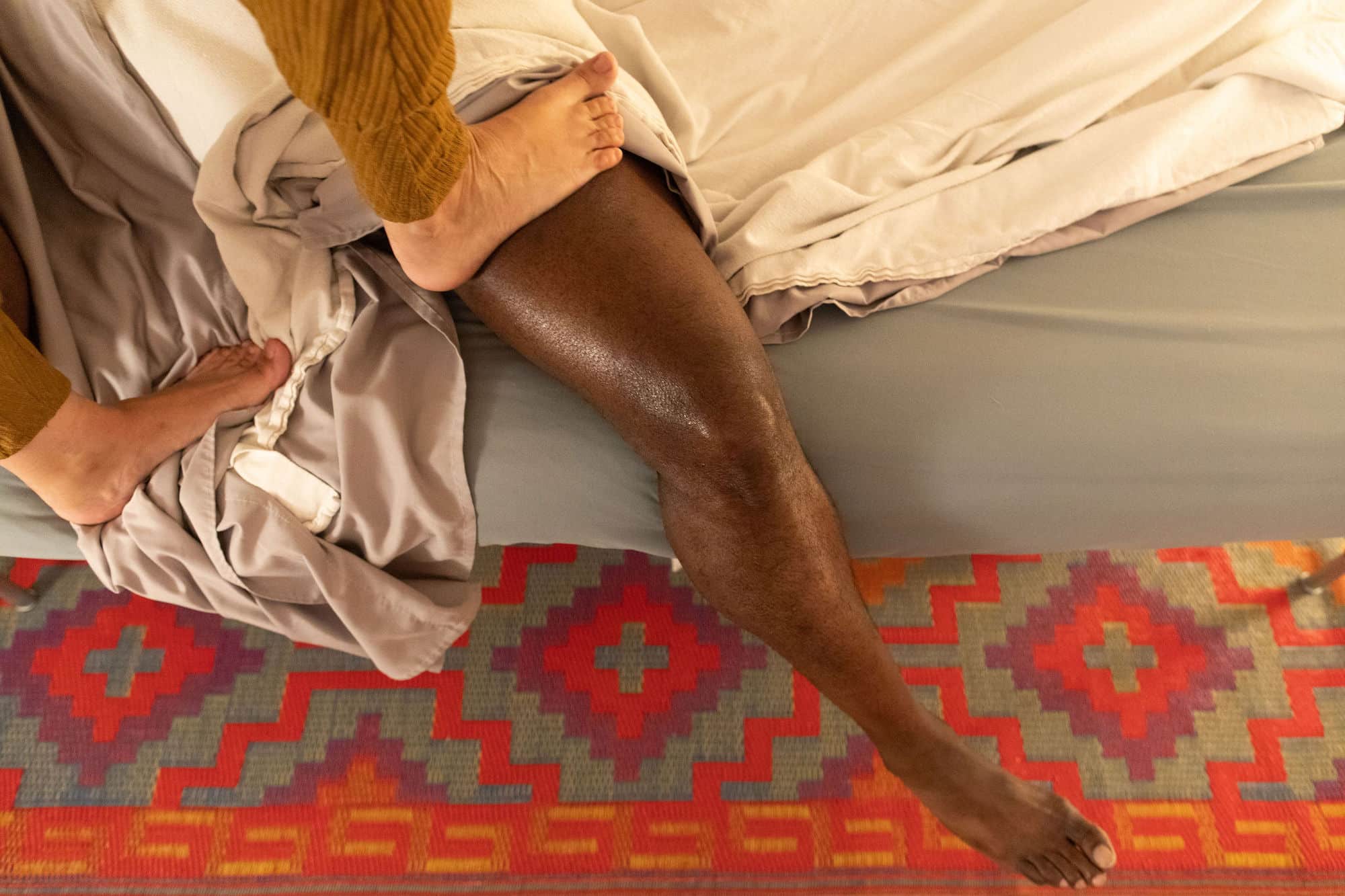As mentioned in our previous blog, ashiatsu is a massage technique dating back 2000 years that involves the application of the therapist’s feet — rather than the hands — to a client’s body. In Japanese, ashi means foot, and atsu means pressure, making the literal translation “foot pressure.”
We perform this type of massage on a standard massage table, with our therapists holding onto ceiling-mounted bars for balance and control during the treatment. Oil or lotion can also be used to enhance the client’s experience.
During an Ashiatsu massage, our therapists use their bare feet to deliver deep compression, long gliding strokes, and/or assisted stretching to loosen any knots. The force of the therapist’s body weight behind each of the strokes allows for a depth of massage that is not possible using the hands alone.
Benefits of Ashiatsu Massage
While the benefits are many, below are the top four benefits of ashiatsu massage:
1. Reduced Chronic Pain
Ashiatsu massage is effective in chronic pain reduction because it goes below the surface layers, manipulating the deeper layers of soft tissue. The pressure boosts circulation, which has the effect of reducing inflammation associated with chronic pain. It also allows for the release of connective tissues, which are responsible for discomfort people typically feel. This type of massage is also suitable for easing long-term back pain associated with poor posture, muscle strain, or degenerated or bulging discs.
2. Lower Overall Discomfort Than Deep Tissue
With traditional deep tissue massage, the fingers and elbows are utilized to apply pressure to the muscles. The sharpness can often lead to discomfort. Ashiatsu massage can deliver up to three times more pressure, but without the soreness. In fact, Ashiatsu massage actually feels overall much gentler than other kinds, but with the enhanced benefit of going much deeper. Ashiatsu massage uses gravity as a helper, with the massage therapist using the whole body as a tool. This can reduce work-related injuries for the massage therapist.
3. Improved Flexibility
The therapist’s body weight uses long, deep strokes and can be effective in broadening and lengthening the muscle fibers. Doing this has the effect of loosening up the muscles and restoring the body’s natural flexibility. Ashiatsu massage is particularly good for the iliotibial band, a thick band of tissue on the outside part of the leg running from the hip to the knee. This is important for athletes as they are constantly moving and on their feet. Having greater flexibility in this muscle means they have greater range of motion and will be less prone to injury.
4. Long-Lasting Effects
Ashiatsu is excellent for those looking for a deep and relaxing massage, and since this is a more intense form of treatment, the benefits can be felt for much longer. For this reason, you may need to rest for a while following the message. After rest has occurred, effects of this therapy include increased circulation of both lymphatic and parasympathetic nervous systems, which enhances health alongside promoting more general feelings of wellbeing.
How to Prepare For Your Ashiatsu Massage
As we listed in #4 of the benefits this type of massage can provide, full body weighted massage is a more intense treatment which means clients need to know what to expect and how to prepare when they come for their first appointment.
1. Consider if Ashiatsu is Right for You
Clients of every age and size can benefit from this deep tissue massage. Ashiatsu is popular for people who enjoy deep tissue massage, athletes, and individuals with thick musculature. It is also recommended for individuals who suffer from chronic neck and back pain, scoliosis, bulging/herniated discs, sciatica and degenerative disc disease. Although beneficial, Ashiatsu is not for everyone. It is not recommended during pregnancy, within 6 weeks of any surgery, or within 9 months of breast implants. Please discuss any potential health concerns with us before trying ashiatsu, we can work together to see if this work is right for you.
2. Drink Water Beforehand
The best way to prepare for an Ashiatsu massage is to drink plenty of water. You should drink even more water than the daily recommended amount- up to 12 glasses of water per day for three days leading up to the massage. This will ensure that the body is properly hydrated and ready to release the toxins.
2. Know What to Expect During the Session
An Ashiatsu massage is typically 60-90 minutes in length, and is done on a massage table and with the use of oil or lotion. Underwear is optional though not recommended. The therapist will clean and warm their feet and use the parallel bars overhead for balance while applying slow, gliding foot pressure and compression to strategic points along the spine and body. The therapist may also incorporate stretching, range of motion techniques, or hands on deep tissue massage. We encourage you to keep the therapist informed about any sensations of discomfort. Ashiatsu sessions are known for being intense, but they should never be painful.
4. Drink Water After
It is also very important that you drink plenty of water immediately following your massage. Drinking a lot of water will help your body flush out all the toxins that are released during your session. If you don’t drink enough water, those toxins could be reabsorbed by your body, which can compound your health problems. Drink at least eight to 10 glasses of water per day for the two days following your massage. Not only will the water help to flush out toxins, but it will also help to relieve the muscle soreness you may experience after such an intense massage.
If Ashiatsu is a treatment you might like to consider, we recommend scheduling a massage today through our online booking platform. And as always, if there are questions or concerns about this method, please contact our team!


